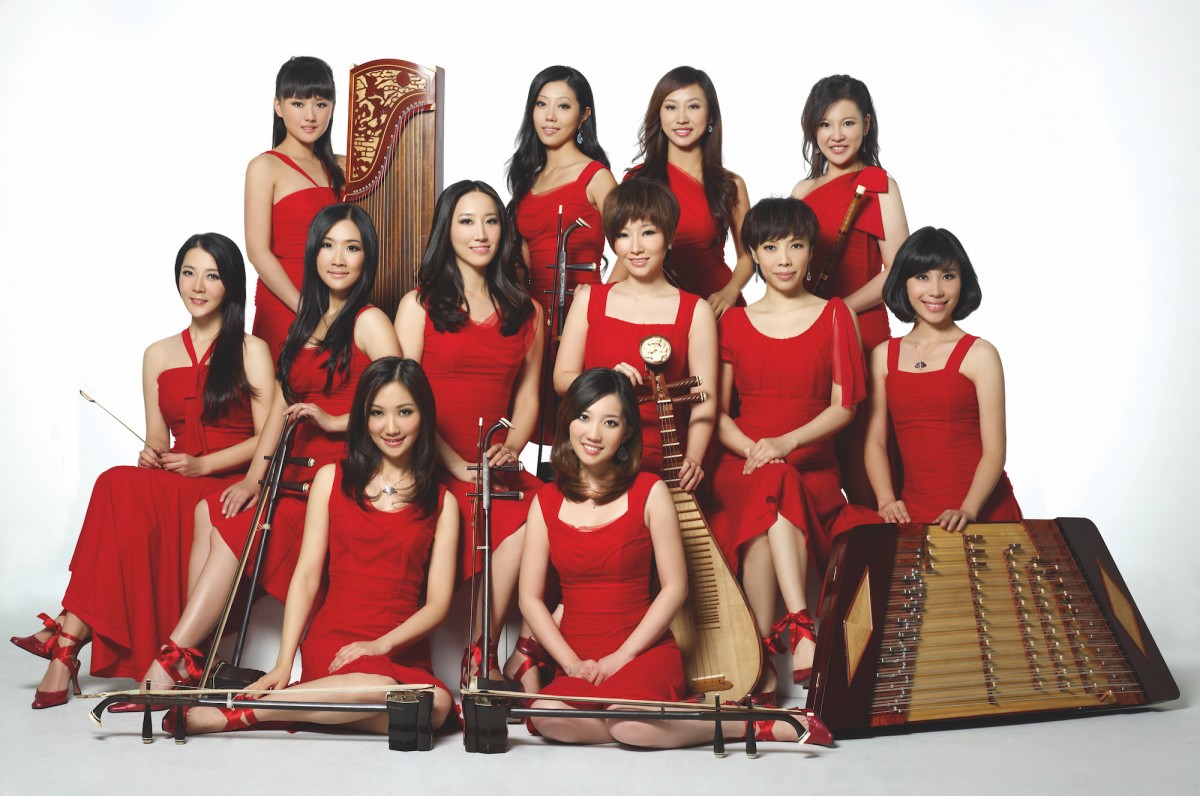12 Girls Band: East meets West
At first glance, the 12 Girls Band may seem like just another pre-packaged music group of girls groomed to be stars: pretty, young and dressed up in beautiful outfits. A recipe for an interesting spectacle on stage? But this ‘girl band’ truly sets itself apart from the Western idea of mainstream popular girl bands. For one, they do not sing, but they play ancient Chinese instruments such as the zither (古箏gǔzhēng), the fiddle (二胡èrhú), the lute (琵琶 pípa) and the bamboo flute (竹笛 zhúdí). Also, their music mixes the classical and the modern, bringing together traditional Chinese folk songs and classical music with jazz, modern rock and pop influences.
Bringing together Chinese and Western music was what Wang Xiaojing (王晓京), the band’s manager and founder, had in mind when he formed the group in 2001. His reasons for combining these two seemingly opposite worlds were twofold: he wanted to popularise Chinese folk music; and at the same time, he wanted to break into the international market. The music played by the band can be roughly divided into two styles. On the one hand, they play well-known Chinese folk songs, such as Jasmine Flower Song (茉莉花 mòlìhuā) and Kangding Love Song (康定情歌 Kāngdìng qínggē), with modern rock, pop and jazz rhythms, aimed at popularising Chinese folk music. On the other hand, they play well-known Western pop and rock songs, such as Coldplay’s Clocks and Enya’s Only Time, on classical Chinese instruments, aimed at opening up the Western market to Chinese music. This strategy proved very successful, and has resulted in sell-out performances, platinum albums and several awards in China and Japan.
The band is made up of 12 members, and was formed by auditioning girls from three top conservatoires in China: the Central Conservatory of Music (中央音乐学院zhōng yāng yīn yuè xué yuàn), China Conservatory of Music (中国音乐学院zhōng guó yīn yuè xué yuàn) and Central University for Nationalities (中央民族大学zhōng yāng mín zú dàx ué). Every member is a very talented, classically trained musician. The traditional instruments, the beautiful visual presentation, and the hugeness of the production, combined with the skills and talents of the musicians, make for quite an interesting show, and illustrate the ideal of the band to create ‘Visual Music’.
Popularising traditional folk music has already proven to be a successful formula. In Ireland, for example, Michael Flatley’s Riverdance, a well-known theatrical show of Irish dancing, has helped popularise traditional Irish folk music. Even the 12 Girls Band plays songs from this Irish show. Now, it is time for the band to introduce a traditional Chinese sound to the Western world. In addition to Riverdance, Enya and Coldplay, the band also plays songs ranging from Take Five by Dave Brubeck to American Christmas songs and El Cóndor Pasa, a Peruvian folk song. To the Western ear, their use of authentic Chinese instruments infuses these well-known songs with an exotic, classical Chinese sound. So, not only do they combine the traditional with the new, but they also bring Chinese and Western music together. This mix of Eastern and Western influences might make the 12 Girls Band a good way to introduce Western listeners to Chinese music.

 Share on Facebook
Share on Facebook Share on Twitter
Share on Twitter Share on LinkedIn
Share on LinkedIn